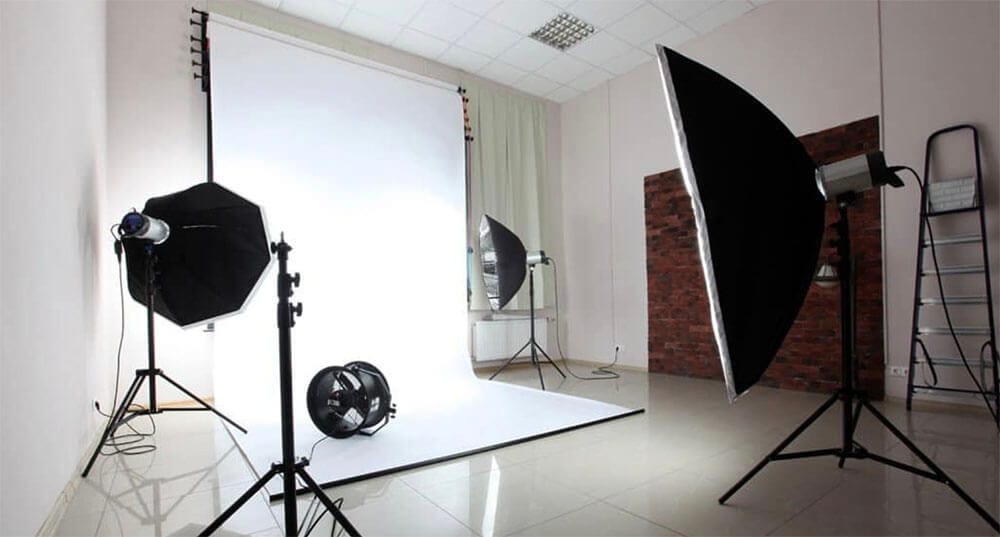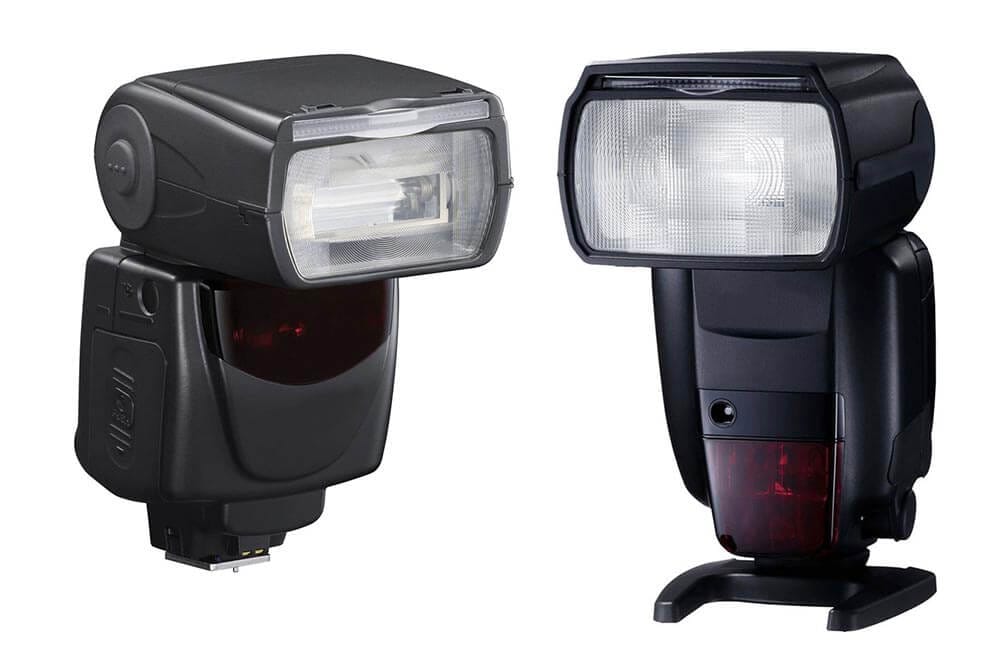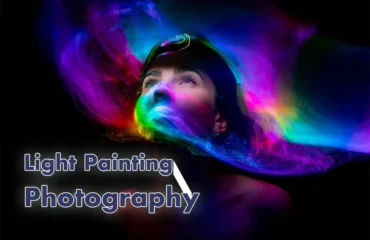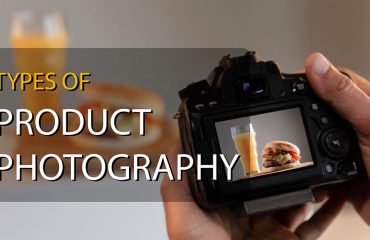
What is Speedlight?

A speedlight, also known as a flash, is a small, portable, and battery-operated device that emits a bright burst of light when triggered. We can use it as a complementary light source to enhance the lighting conditions in product photography.
When it comes to product photography, lighting plays a crucial role in highlighting the product’s features and making it look appealing to the audience. However, sometimes the natural light available may not be sufficient, or the photographer may want to create a particular effect that requires additional light. In such cases, speedlights can be an excellent tool to create the desired lighting conditions.
Speedlights are versatile and can be used in various ways to achieve different lighting effects. For example, they can be mounted on a camera or used off-camera, allowing the photographer to control the direction and intensity of the light. They can also be used in combination with other lighting equipment, such as softboxes, diffusers, or reflectors, to create a softer or more focused light.
Moreover, speedlights can also be used to freeze motion, making them ideal for capturing fast-moving subjects, such as products in action or sports products. They can also be used to create dramatic or creative lighting effects, such as silhouettes or light painting.
However, using speedlights in product photography requires some expertise and experience. The photographer needs to have a good understanding of how to control the light, adjust the settings, and position the light source to achieve the desired effect. It is also essential to balance the ambient light and the flash to avoid harsh shadows or overexposure.
Light Up Your Product Photography: The Advantages of Using Speedlights
- Versatility: One of the most significant advantages of speedlights is their versatility. They can be used in various ways to create different lighting effects, making them ideal for product photography. For instance, they can be mounted on a camera or used off-camera, and their intensity and direction can be adjusted as needed. They can also be combined with other lighting equipment, such as softboxes, diffusers, or reflectors, to create a softer or more focused light.
- Portability: Another perk of speedlights is their portability. They are small and lightweight, making them easy to carry around and use in different locations. They are also battery-operated, so they don’t require a power source, which can be especially useful when shooting on location.
- Quick and efficient: Speedlights emit a burst of light that is quick and efficient, making them ideal for freezing motion and capturing fast-moving subjects such as products in action or sports products. They can also be used to balance the ambient light and create a more evenly lit image.
- Cost-effective: Speedlights are relatively affordable compared to other lighting equipment, making them an excellent option for photographers on a budget. They are also durable and can last for years with proper care and maintenance.
- Creative possibilities: Speedlights can be used to create unique and creative lighting effects, such as silhouettes, light painting, or rim lighting. These effects can help make product images more engaging and eye-catching to potential customers. With some experimentation and creativity, speedlights can help photographers stand out from the crowd and create images that leave a lasting impression.
- Easy to use: Speedlights are relatively easy to use, and many models come with TTL (Through-The-Lens) metering, which automatically adjusts the flash output based on the camera settings. This feature can save time and make the shooting process more efficient. Some models also come with wireless triggering options, allowing photographers to control multiple speedlights simultaneously.
In conclusion, speedlights offer several perks for product photography, including versatility, portability, quickness, cost-effectiveness, creative possibilities, and ease of use. These benefits make them an excellent tool for enhancing the lighting conditions and creating compelling product images that capture the attention of potential customers.
Lighten Up Your Product Photography with a Diffuser on Your Speedlight:
- Soften Harsh Light: A speedlight can produce harsh and unflattering light that can create unwanted shadows and highlights on the product. A diffuser can soften the light by scattering it in different directions and reducing its intensity, creating a more natural and even illumination on the product.
- Reduce Glare and Reflections: When photographing reflective or shiny products, such as jewelry or electronics, unwanted glare and reflections can appear in the final image. Using a diffuser can help to reduce the amount of light that reflects off the product, resulting in a cleaner and more polished final image.
- Create a Softer Look: By softening the light, a diffuser can create a softer and more pleasant look to the product, making it more appealing to potential customers. This is particularly important when photographing products that are designed to be used in a comfortable and relaxing environment, such as home decor or beauty products.
- Control the Light: A diffuser allows photographers to have more control over the light by adjusting the intensity and direction of the light. By using a diffuser, photographers can direct the light to specific areas of the product and highlight its features and texture, creating a more visually appealing image.
- Enhance Colors: Using a diffuser can help to enhance the colors of the product by creating a more even and balanced light. This allows the product’s true colors and texture to be captured accurately and prominently, making it more attractive to potential customers.
In summary, using a diffuser with a speedlight for product photography can help to soften harsh light, reduce glare and reflections, create a softer look, control the light, and enhance colors. This technique is an affordable and easy-to-use solution for photographers looking to improve the quality of their product images and make them more appealing to potential customers.
Create Bold and Dramatic Product Photos with Hard Light and Strong Shadows:
- Use a Small Light Source: To create hard light and strong shadows, use a small light source such as a speedlight or a focused spotlight. The smaller the light source, the more defined and dramatic the shadows will be.
- Control the Direction of the Light: The direction of the light source will affect the shape and size of the shadows. Experiment with different angles and positions to find the best direction for the light that emphasizes the product’s shape and texture. Consider placing the light source to the side or above the product to create more dramatic shadows.
- Adjust the Distance: The distance between the light source and the product will affect the intensity of the light and the size of the shadows. Moving the light source closer to the product will create a more intense light and smaller shadows, while moving it further away will create a softer light and larger shadows.
- Use Props and Backgrounds: Incorporating props and backgrounds can help to enhance the effect of the hard light and create a more visually interesting image. Experiment with different textures and colors to find the best combination for your product. Consider using reflective surfaces or contrasting backgrounds to create an even more dramatic effect.
- Be Mindful of Reflections: When using hard light, reflections can be more pronounced and distracting in the final image. Be mindful of any reflective surfaces on the product or in the background and adjust the position of the light to avoid unwanted reflections.
Using hard light and strong shadows can create a bold and dramatic look in product photography, which can be particularly effective for certain products. However, it is important to use this technique appropriately and balance it with other lighting techniques to create a well-rounded and visually appealing image. Hard light should be used intentionally to emphasize certain aspects of the product, rather than being the only source of illumination. With practice and experimentation, you can use hard light and strong shadows to create striking product photos that stand out and capture the attention of potential customers.
Shedding Light on Backlight: Why Experimenting with Backlighting Can Enhance Your Product Photography:
Backlighting is a photography technique that involves positioning the light source behind the subject being photographed. This can create a wide range of effects, such as silhouettes, halos, and dramatic contrasts between light and shadow.
When used in product photography, backlighting can be a powerful tool for creating bold and eye-catching images. By illuminating the edges and contours of a product, backlighting can help to showcase its unique features and textures.
Here are some tips for using backlighting in product photography:
- Choose the Right Light Source: Backlighting can be achieved using natural light or artificial sources, such as studio lights or lamps. Choose the light source that best suits your needs and the effect you’re trying to create.
- Position the Light Source Carefully: The position of the light source will determine the overall look and feel of your image. Experiment with different angles and distances to find the best placement for your product.
- Use Reflectors or Diffusers: Backlighting can create harsh shadows and reflections on your subject. To soften these effects, use reflectors or diffusers to redirect and soften the light.
- Consider the Background: Backlighting can create a dramatic contrast between the subject and the background. Consider using a neutral or complementary color for the background to enhance the effect.
- Use Multiple Light Sources: Backlighting can be combined with other lighting techniques to create a more dynamic and visually interesting image. Experiment with different lighting setups to find the best combination for your product.
Overall, backlighting can be a powerful tool for creating bold and dramatic product images. By carefully positioning and adjusting the light source, using reflectors and diffusers, and considering the background, you can create images that showcase your products in the best possible light.
Creating a Luminous Effect: Ensure Your Products Glow from the Inside in Product Photography:
In product photography, creating a luminous effect by making the product glow from the inside can help to enhance its features and create a more striking and memorable image. This technique involves using light to illuminate the inside of the product, creating a bright and vivid glow.
Here are some tips for creating a luminous effect in your product photography:
- Choose the Right Products: Not all products are suitable for this technique. Consider products that have a translucent or transparent quality, such as glassware or plastic containers, that will allow the light to shine through.
- Use a Lightbox: A lightbox is a device that diffuses light to create an even and soft illumination. It can be used to create a luminous effect by positioning the lightbox behind the product, allowing the light to pass through and create a glowing effect.
- Use LEDs or Other Lighting Equipment: LEDs or other lighting equipment can be used to create a bright and vibrant glow inside the product. Position the lights carefully to create the desired effect, and experiment with different colors and intensities to create the perfect look.
- Use Reflections and Refractions: By positioning reflective or refractive materials, such as mirrors or prisms, you can create interesting patterns and shapes that will enhance the luminous effect.
- Adjust the Exposure and Contrast: In post-processing, adjust the exposure and contrast to enhance the luminous effect and make it stand out even more.
Overall, creating a luminous effect in your product photography can help to make your products stand out and catch the viewer’s attention. By choosing the right products, using a lightbox, and experimenting with lighting and reflections, you can create images that are visually stunning and memorable.
Capture Every Angle: Freeze Your 360° Rotating Product Photography:
360° rotating product photography is a popular technique used to showcase products from all angles, providing a comprehensive view of the product and its features. This technique involves taking a series of photos of the product from every angle as it rotates on a turntable.
However, capturing high-quality 360° rotating product photography can be challenging as it requires precise timing and synchronization between the camera and turntable. Any slight movement or blur can result in a low-quality image.
Here are some tips for freezing your 360° rotating product photography and capturing sharp and high-quality images:
- Use a Sturdy Tripod: A sturdy tripod is essential for keeping the camera steady and preventing any vibrations or movement during the shoot.
- Use a Fast Shutter Speed: To freeze the motion of the rotating product, use a fast shutter speed. Experiment with different shutter speeds to find the perfect balance between freezing the motion and capturing enough light.
- Use Manual Focus: Using manual focus allows you to ensure that the product is in focus throughout the rotation. Autofocus may struggle to keep up with the fast-moving product and result in blurry images.
- Set Your Camera to Burst Mode: Burst mode allows you to take multiple shots in rapid succession, increasing your chances of capturing a sharp and high-quality image.
- Use Continuous Lighting: Continuous lighting can help to provide a consistent light source and prevent any flickering or changes in lighting throughout the rotation.
- Edit in Post-Processing: In post-processing, adjust the exposure and contrast to enhance the details and colors of the product.
Overall, freezing your 360° rotating product photography requires careful planning and execution to ensure that the final result is a sharp and high-quality image. By using a sturdy tripod, fast shutter speed, manual focus, burst mode, continuous lighting, and post-processing editing, you can capture every angle of your product and showcase its features in the best possible light.
Unleash Your Creativity: Play with the Creatures of Light in Product Photography:
Light is the most crucial element in product photography, as it can make or break the final result. Understanding how to use light creatively can help you create visually stunning images that capture the essence of your product.
One of the ways to play with light creatively is by experimenting with “creatures of light.” These include natural elements such as reflections, shadows, and highlights that can add depth, dimension, and drama to your product photos.
Here are some tips for playing with creatures of light in product photography:
- Experiment with Reflections: Mirrors, glass, and other reflective surfaces can be used to create unique and interesting reflections of your product. Experiment with different angles and positions to find the most captivating reflection.
- Play with Shadows: Shadows can add depth and dimension to your product photos. Use a single light source to create a dramatic shadow or multiple light sources to soften the shadows.
- Highlight the Details: Use light to highlight the details and textures of your product. For example, if you’re shooting a product with intricate details, use a light source to cast shadows that accentuate those details.
- Use Color Gels: Color gels can be used to add a pop of color to your product photos. Experiment with different colors and intensities to create a unique and eye-catching effect.
- Play with Bokeh: Bokeh refers to the blurred background of an image, often created by a shallow depth of field. Experiment with different shapes and sizes of bokeh to create a dreamy and ethereal effect.
By playing with the creatures of light in product photography, you can create visually stunning and unique images that capture the essence of your product. Experiment with reflections, shadows, highlights, color gels, and bokeh to unleash your creativity and create product photos that stand out.
When it comes to product photography, lighting is everything. And while natural light can work wonders in some situations, there will be times when you need to rely on artificial light sources to get the job done. One such source is a speedlight, which is a small, portable flash that can be mounted onto your camera or used off-camera for more creative control.
How to Shoot Product Photography with Speedlight?
Here are some tips on how to shoot product photography with speedlight:
- Set up your shot: Before you start shooting, make sure you have your product set up in a way that is visually appealing. Consider the background, lighting, and any props that might enhance the shot.
- Position your speedlight: If you are using a speedlight mounted onto your camera, position it so that it is angled slightly to the side of your subject. This will help create some depth and prevent the product from looking too flat. If you are using an off-camera speedlight, you have more flexibility to position it wherever you like to create the desired effect.
- Use a diffuser: To avoid harsh, unflattering shadows, consider using a diffuser on your speedlight. A diffuser will soften the light and create a more even spread of light on your subject. You can purchase a commercial diffuser, or make your own by attaching a piece of white fabric or paper to the front of your speedlight.
- Experiment with different angles: Don’t be afraid to move around and try shooting from different angles to find the most interesting and flattering perspective for your product. Try shooting from above, below, or even straight on for a more unique look.
- Consider backlighting: Backlighting can be a great way to create a dramatic effect in your product photography. Simply position your speedlight behind your subject, pointing towards the camera, to create a halo effect around your product.
- Use hard light for strong shadows: While diffused light is great for creating soft, even lighting, sometimes you might want to create a more dramatic effect with hard light. This can be achieved by removing the diffuser from your speedlight, or using a bare-bulb flash.
- Freeze motion with a fast shutter speed: If you are shooting a product that is moving, such as a piece of clothing being worn, you will need to use a fast shutter speed to freeze the motion. This can be especially important when using a speedlight, as the flash duration is typically very short.
- Play with different settings: Depending on the look you are going for, you may need to adjust your camera settings such as aperture, ISO, and shutter speed. Don’t be afraid to experiment and try different combinations until you find the perfect look for your product.
- Edit your photos: Finally, remember that editing can be just as important as the shooting process itself. Use photo editing software to adjust the brightness, contrast, color, and other elements of your product photos until they look their best.
In conclusion, shooting product photography with a speedlight can be a great way to achieve professional-looking results with minimal equipment. By following these tips and experimenting with different techniques, you can create product photos that are both visually appealing and effective at selling your products.
Additional Tips to Leverage Speedlight:
Here are some additional tips to help you leverage your speedlight:
- Get to know your flash: Understanding how your flash works is crucial to getting the most out of it. Take the time to read your speedlight’s manual and experiment with its settings to get a feel for what it can do.
- Use it off-camera: One of the best ways to use a speedlight is to take it off-camera and use it as a portable light source. This allows you to position the flash where you want it and create more dynamic lighting.
- Use modifiers: Adding modifiers to your speedlight can help you control the quality of light and create more interesting effects. Some popular modifiers include softboxes, umbrellas, and grids.
- Balance ambient light: When using a speedlight, it’s important to balance the flash output with the ambient light in your scene. This will help you create a more natural-looking image that doesn’t look overly “flashed”.
- Use TTL metering: Most modern speedlights come with TTL (Through The Lens) metering, which allows the flash to automatically adjust its output based on the scene you’re shooting. This can be a great time-saver and can help you get the exposure right without having to do a lot of manual calculations.
- Experiment with different angles: Don’t be afraid to experiment with different angles when using your speedlight. Try bouncing the flash off a ceiling or wall, or use it as a fill light to add some extra light to the shadows in your image.
- Practice, practice, practice: As with any photography technique, the more you practice using your speedlight, the better you’ll become at it. Take some time to experiment with different settings and techniques, and don’t be afraid to make mistakes along the way.
Additional Tips to Leverage Speedlight:
Additional tips for leveraging your speedlight:
- Use multiple speedlights: Using multiple speedlights can give you more control over the lighting in your scene. By using one speedlight as a key light and another as a fill light, you can balance out the shadows and create a more even lighting effect. You can also use multiple speedlights to create more dramatic lighting effects, such as backlighting or sidelighting.
- Use a flash bracket: A flash bracket is a device that attaches to your camera and allows you to position your speedlight higher above your camera. This can create more natural-looking lighting and reduce the occurrence of red-eye.
- Use a flash diffuser: A flash diffuser is a device that attaches to the front of your speedlight and helps to soften the light it produces. This can reduce harsh shadows and create a more flattering lighting effect, especially when shooting portraits. There are many different types of flash diffusers available, so experiment with different options to find the one that works best for you.
- Use a bounce card: A bounce card is a device that attaches to the top of your speedlight and redirects some of the light back towards your subject. This can create a more flattering lighting effect by reducing harsh shadows and filling in any dark areas on your subject’s face. You can create your own bounce card using a piece of white foam board, or purchase a commercial bounce card.
- Use a light meter: A light meter is a device that measures the amount of light in your scene. By using a light meter, you can accurately measure the light and adjust your speedlight settings accordingly. This can be especially useful when shooting in tricky lighting conditions, such as low light or bright sunlight.
- Use gels: Colored gels are transparent sheets of plastic that attach to your speedlight and change the color of the light it produces. You can use gels to add creative color effects to your images, such as warming up the light or creating a cool blue tone. Experiment with different colors and intensities to create the look you want.
- Use high-speed sync: High-speed sync is a feature on many speedlights that allows you to use your flash at higher shutter speeds. This can be useful when shooting in bright daylight, or when you want to freeze motion. By using high-speed sync, you can achieve a balanced exposure between your subject and the background, even in bright light.
Remember, the key to leveraging your speedlight is to experiment and practice using it in different ways. With time and experience, you’ll develop your own style and technique for using speedlights to create stunning images.
Pros and Cons of Using Speedlight for Product Photography: Illuminating Your Images with Speed
Pros of Using Speedlight for Product Photography:
- Versatility: Speedlights are small and portable, which makes them easy to use in different locations and settings. They can be mounted on a camera or used off-camera with a variety of modifiers, such as softboxes and umbrellas.
- Control over lighting: Speedlights give photographers precise control over the lighting in their images. They can be adjusted for power, direction, and color temperature, and can be used to create a range of lighting effects, from soft and diffused to hard and directional.
- Faster setup time: Speedlights are faster and easier to set up than traditional studio lighting equipment, such as strobes and continuous lights. This can be especially useful for product photography, where time is often of the essence.
- Cost-effective: Speedlights are generally less expensive than studio lighting equipment, which makes them a great option for photographers on a budget. They also use less power than studio lights, which can save on energy costs over time.
Cons of Using Speedlight for Product Photography:
- Limited power output: Speedlights are generally less powerful than studio lighting equipment, which can limit their use in larger product photography setups. They also have shorter battery life and recycle times, which can slow down the shooting process.
- Limited coverage area: Speedlights have a limited coverage area, which can make it difficult to evenly light larger products or sets. They are also more prone to creating hot spots and shadows, which can be difficult to eliminate without additional lighting.
- Color temperature inconsistency: Speedlights can produce color temperature inconsistencies, especially when used with different modifiers or bounced off different surfaces. This can be corrected in post-processing, but it can add additional time and effort to the workflow.
- Limited durability: Speedlights are often made of plastic and are not as durable as studio lighting equipment. They can be more prone to damage and wear over time, especially when used in demanding shooting environments.
Overall, speedlights can be a great option for product photography, especially for smaller products or when portability and speed are important factors. However, they may not be the best option for larger products or sets that require more powerful and even lighting coverage.



